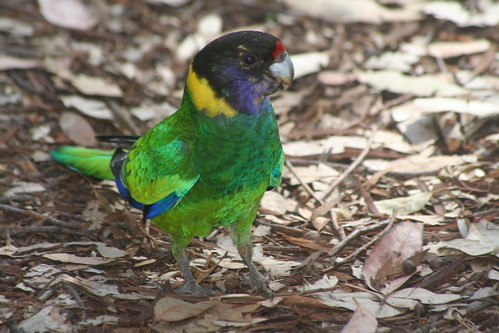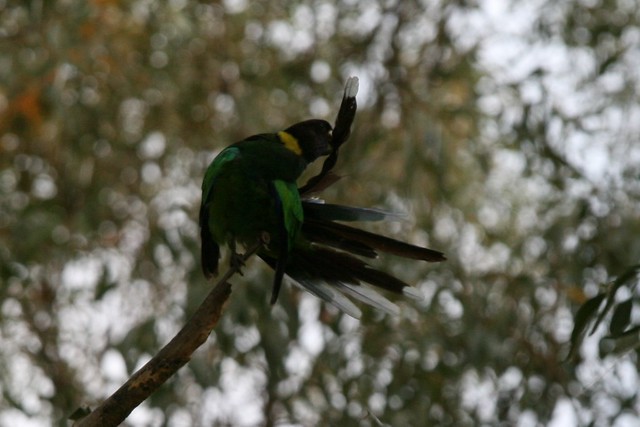Australian Ringneck Biography








The Australian Ringneck is a large parrot, differing in size and plumage in different regions. There are four subspecies, in two main groups. All are mostly green, with an obvious yellow band on the hind-neck. Members of the Mallee group have a mainly green head and neck. The Mallee Ringneck, subspecies barnardi, has a more varied green and blue body, with more yellow underneath and a red frontal band. The Cloncurry subspecies macgillivrayi has much more yellow and pale turquoise around the face. The Port Lincoln group all have dark hoods and are mainly green. The Twenty Eight Parrot, subspecies semitorquatus, has a red frontal band and is all green underneath. The Port Lincoln Parrot, subspecies zonarius, is green and yellow underneath. All subspecies hybridise widely. They are quiet when feeding, but when disturbed fly off with loud alarm calls. Their flight is swift and undulating. This species is also known as the Mallee, Port Lincoln, Banded or Cloncurry Ringneck, Twenty Eight Parrot or Buln Buln.
The Australian Ringneck is unmistakable with a yellow hind collar on a mostly green bird.
The Australian Ringneck is endemic to (only found in) Australia Northern Territory , north-western Queensland and inland eastern Australia Australia Sydney
Australian Ringnecks are found in pairs or small flocks over lightly timbered areas, open woodlands and tree-lined watercourses.
Australian Ringnecks feed mainly on the ground, but also in trees and shrubs, usually in the morning and late afternoon, resting in the heat of the day. They eat seeds, and some fruits, flowers, nectar and insects and their larvae. They often feed on spilt grain on roadsides.
Australian Ringnecks lay their eggs in hollows in living or dead trees on a bare base or on rotting wood dust. They enter through a hole in the trunk, a knothole or a spout. The female incubates the eggs while being fed by the male and she may leave the nest for a short time to be fed by him. The young are fed by both parents and often can be seen at the mouth of the hollow.
Australian Ringneck

Australian Ringneck

Australian Ringneck

Australian Ringneck

Australian Ringneck

Australian Ringneck

Australian Ringneck

Australian Ringneck

Australian Ringneck
Australian Ringneck Parrots In Garden
Australian Ringneck Parrot
No comments:
Post a Comment